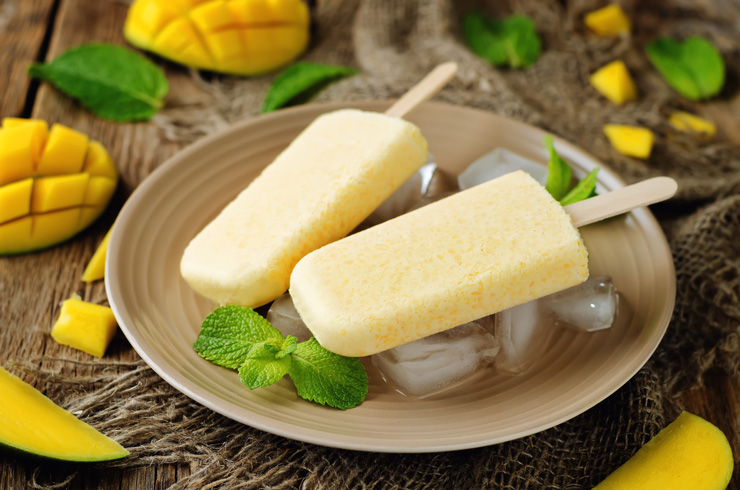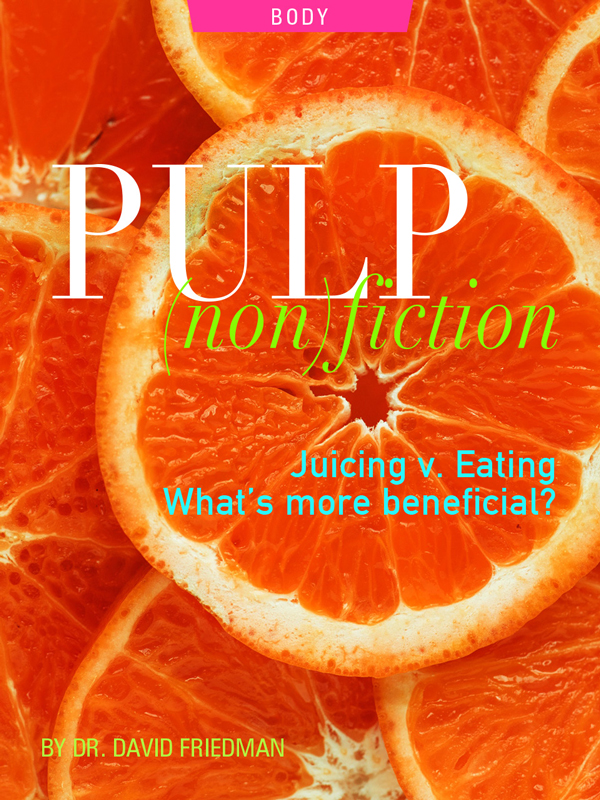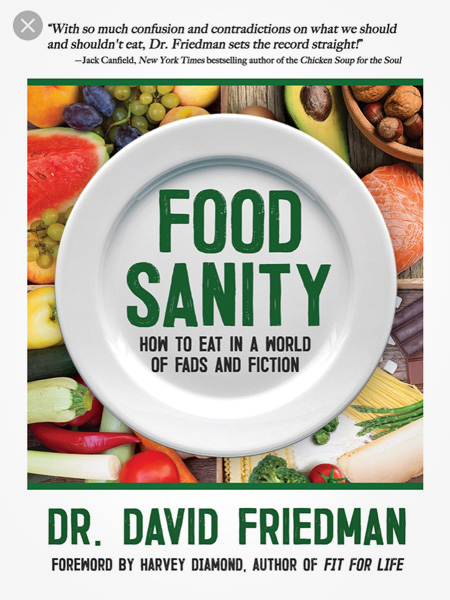An exploration into the truth about the health benefits of juicing vs. eating
—
Juicing is a hot and healthy trend. Juice machines are more popular now than ever and, according to Barron’s, over 6,200 juice bars are now churning out swamp-colored elixirs across the country. Starbucks recently spent $30 million to acquire Evolution Fresh, a cold-crafted juice operation, hoping to capitalize on this healthy lifestyle trend. Some health experts claim juicing is better for you than eating whole fruits and vegetables because the body can absorb the nutrients better and it gives the digestive system a rest from working on the fiber. Actually, there’s no scientific evidence that extracted juices are healthier than the juice you get by eating the fruit or vegetable itself.
Most juicing machines leave behind, or completely annihilate the pulp, which is chock-full of vitamins, minerals and needed fiber.
For example, one orange (with pulp) contains approximately 30 MG of vitamin C, but if you make orange juice with that same orange (without the pulp) the fluid will contain only 18 MG of vitamin C.
Everyone’s heard the saying, “An apple a day helps keep the doctor away.” There’s a lot of truth to that. Apples contain a gamut of health enhancing ingredients, one of them being phytosterols which reduce inflammation, help lower cholesterol, prevent heart disease and support a healthy immune system. Evidence also suggests that phytosterols activate pancreatic beta cells for improved insulin production.
One cup of apples contain 15.0 MG of phytosterols. One cup of apple juice contains zero MG of phytosterols. Fruits and vegetables are loaded with ‘anti-oxidant’ properties which fight off free radicals in the environment that lead to disease. Also, the sugar levels in fruit juice can cause a significant spike in blood sugar levels, increasing the risk of hyperglycemia. Eating the same fruit will have a much less blood sugar surge because its fiber content slows the release of sugar.
The antioxidant value of food is measured by using ORAC (Oxygen Radical Absorbance Capacity) units, a measurement for antioxidants developed by the National Institute on Aging, a division of the National Institute of Health. The higher the ORAC number, the higher the antioxidants in that particular food. One example of the marked difference between juicing versus eating can be found when looking at the ORAC value of cranberries. The difference in ORAC measurement of raw cranberries is 9,090, compared to cranberry juice, which measures only 1,452.
There’s no denying it, juicing just doesn’t offer the nutritional benefits of eating raw fruits and vegetables.
A name that has become synonymous with juicing is the late great Jack Lalanne. Known as ‘The Godfather of Fitness’, and world-renowned nutritional expert, he was the creator of the ‘Juice Tiger’ and ‘The Jack Lalanne Power Juicer’. He died at the age of 96, still healthy and active until the very end! Jack lived long and vibrantly, and inspired millions of people to make positive health choices, to lose weight and stay in shape.
I had the honor of chatting with him at a convention I attended in Ohio. I asked Mr. Lalanne if he really preferred juicing his fruits and vegetables over eating them? He replied, “Eating fruits and vegetables is vital because they contain healthy fiber and pulp which are removed during the juicing process.” He went on to tell me he never discarded the pulp remnants after juicing but instead, used them to make homemade bread, soups, fresh sherbet and muffins.
I asked him why he didn’t show people how to do that on his Juice Tiger infomercials?” He smiled and replied, “Juice machines offer people something quick and easy. Had I recommended additional steps required after juicing, I wouldn’t have sold so many juicers.”
He’s right! People want the ‘one stop shop’ and they’d rather drink 10 oz. of juice than take the time to prepare homemade soup using the ‘good stuff’ that they throw into the garbage.
While juicing is a delicious and refreshing option, it should not be a substitute for eating. We were designed to chew our fruits and vegetables, not drink them.

What’s Next: 10 Uses for Fruit & Vegetable Pulp
The things you can do with the leftover pulp are endless and truly amazing. Seriously, this isn’t pulp fiction! Here’s my fiber rich, Top 10 favorites:
1. Use fruit pulp to make frozen ‘pulp-sicles’
Here’s one example:
Cantaloupe, Mint, and Mango
Makes about 4 ½ cups
Ingredients:
- 1 cantaloupe, peeled, seeded, and quartered
- 8-10 sprigs of fresh mint
- 2 mangoes, halved, seeded, and peeled.
Instructions:
- Put your pulp and 2 ounces of reserved juice into the blender and blend until smooth.
- Spoon into popsicle molds and use wooden skewers (both available on Amazon.)
- Freeze overnight.
*An easy trick to getting them out of the mold is to fill a glass with hot water and put the mold in for a few seconds — then the ‘pulp-sicle’ will slide right out.
2. Use in DIY skincare recipes like masks and scrubs
Here’s a body scrub recipe made from leftover juice pulp:
Ingredients:
- 2 Tablespoons of leftover juice pulp (pulp of any fruits or vegetables)
- ¼ cup of brown sugar
- ¼ cup of olive oil
Instructions:
- Mix ingredients thoroughly until smooth
*Works great as an exfoliator and aids in skin rejuvenation.
3. Add it to soups
…to thicken and increase fiber and nutrients.
4. Make a fruity tea
…by boiling fruit pulp with water, adding spices such as cinnamon or ginger, cooling, and then straining.
5. Use veggie pulp to add nutrient density
…to mac n’ cheese, pasta sauces, or layer into a lasagna.
6. Add veggie pulp to sour cream or goat cheese
…for a delicious spread or dip.
7. Mix pulp into baked goods
…like cakes, muffins, bread or baked cookies. Celery, onion, carrot, sweet potato, spinach, apple, and berry all work great.
8. Use fruit or veggie pulp to add flavor
…texture, and moisture to pancakes.
9. Add apple pulp into your favorite oatmeal recipe
…or mix it into almond or peanut butter for a delicious fruit and nut sandwich.
10. Use it to fertilize your garden
…the mineral rich pulp will add more life to your plants, herbs, veggies and fruit garden.
You may also enjoy reading Eat Your Veggies! Hidden Veggie Muffins: Sneak More Nutrition Into Your Family’s Diet by Christine Moss

